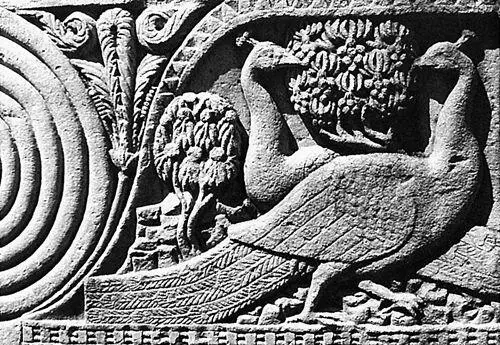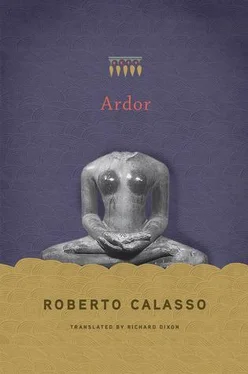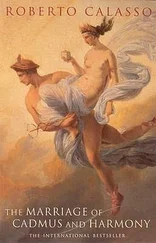Another layer of implications in the story of Yajña and Vāc and their fateful coitus is that of the conflict, of the latent and deadly hostility between myth and ritual. While the stories of the Olympians in Greece manage to free themselves from their ritual associations, to proliferate and eventually be lost in the vast estuary of Alexandrian literature, in Vedic India the process is the reverse: the progressive subjection of the mythical stories to ritual action, as if their purpose was simply that of illustrating it — and not to exist in their own right, as a primary manifestation of the divine. Perhaps this is why the Devas always retained a certain cowardly and ineffectual streak. A sequence of ritual acts had once made them into what they then were. Another sequence, breaking free from their control, would one day be able to bring them down.
* * *
Although they were opposites in everything else, Athens and Jerusalem ended up establishing a strategic alliance and basing it on one word: lógos. An alliance sealed with the opening verse of John’s Gospel. From the time of the Greek sages, lógos had been a power connected to speech, to discourse, even though it did not let itself be wholly absorbed into it. Noûs , on the other hand, had always been a force independent from speech. With John’s Gospel, lógos , in becoming the Word and the divine incarnation, reestablished its sovereignty. Any further power was inconceivable. And so thought and mind were indissolubly linked to speech. From then on, nondiscursive thought was to be pushed aside, or even underground. It was the Egypt of thought, its facies hieroglyphica , that was swallowed up, driven away by the formidable forces of lógos as Reason and of lógos as the Word.
Vedic India remained extraneous and hostile to this drama without ever giving way. The Brāhmaṇas already abandon the mythical stories and liturgical sequences devoted to the irreversible imbalance between Mind and Speech, to the greater weight of the first over the other. Then in the Chāndogya Upaniṣad the relationship is described more bluntly: “The mind indeed is more than speech.” The watershed between East and West, over which so much thought has been given, can be traced to this point. All the rest follows from that radical divergence, which India would never abandon, following it from the Veda to the Vedānta.
In saying this, the Chāndogya Upaniṣad uses a language that is neither philosophical nor oracular, but serenely apodictic: “The mind indeed is more than speech. As a fist holds two āmalaka or kola or akṣa fruits, in the same way the mind holds speech and name. If the mind thinks: I want to study the hymns, then they are studied; I want to celebrate sacrifices, then they are celebrated; I want to obtain children and cattle, then they are obtained; I want to devote myself to this and the other world, then they are devoted to. For the Self, ātman , is mind, the world is mind, brahman is mind. Venerate the mind.”
* * *
Sacrifice is not only the offering of a specific substance, such as the prodigious soma. Sacrifice is also a concerted action that produces a substance: “‘It is honey,’ they say; for honey means the sacrifice.” But if we watch a sacrifice, we don’t see this honey. We see gestures accompanied by words. And the essence of the word is in its being a substitute: but for what? For the thing named, say the Western theorists. The Vedic ritualists thought differently: the word substitutes the honey produced by the sacrifice, honey that the gods sucked and drained away to prevent men finding the path to heaven through the sacrifice: “The sacrifice is speech: for with it he provides that part of the sacrifice which has been sucked and drained away.” For the word to substitute the honey, it has to have a sacrificial nature already. Let us recall how Yajña, Sacrifice, as soon as he saw Vāc, Speech, thought: “Let me couple with her,” as if nothing for him were quite like it. And nothing attracted him more. This is why speech comes into action.
For the Vedic ritualists, everything involved composition, work. Even the splendor of Indra (who is also the sun) was not so in the beginning: “In the same manner that everything else is now dark, so was he then.” It was only when the gods composed their “favorite forms and desirable powers” that Indra began to shine. Never had composition been recognized as having so much power: in its forms, gestures, words. This is the secret inheritance that ritual — through devious paths and deep oblivion — has consigned to art.
Brahman or the knowledge of it are no different among very powerful beings such as Vāmadeva or in the much less powerful men of today. But one may suspect that in men of today the fruit of the knowledge of brahman is uncertain.
—Śaṅkara, Bṛhadāraṇyakopaniṣadbhāṣya, 1.4.10

From the Ṛgveda to the Bhagavad Gītā a way of reasoning is developed that never acknowledges a single subject, but rather presupposes a dual subject. This is because the constitution of the mind is dual: consisting of a gaze that perceives (eats) the world and of a gaze that contemplates the gaze directed at the world. The first expression of this idea appears with the two birds in hymn 1.164 of the Ṛgveda : “Two birds, a couple of friends, are perched on the same tree. One of them eats the sweet berry of the pippal ; the other, without eating, watches.” There is no more basic revelation than this. And the Ṛgveda presents it with the clarity of its enigmatic language. The dual constitution of the mind implies that two birds dwell perpetually within each of us: the Self, ātman , and the I, aham. Friends, alike, sitting on the tree at the same level, one might seem the double of the other. And so it is in the life of many, who never manage to distinguish between them. But, once their difference has been recognized, everything changes. Every moment becomes the superimposition of two perceptions that can add together, cancel each other out, multiply each other. When they multiply each other, according to the mysterious formula 1 × 1, thought springs forth. Even if, seen from outside, all remains the same. The answer seems still to be 1.
Ātman , the Self, is a discovery. How to attain it was the ultimate doctrine for the disciples who had studied and assimilated all the Vedas. No one attained it unless he was capable of considering what was going on in his own mind as an uninterrupted exchange between the I, aham , and the Self: similar and opposing powers, the one— aham —intrusive yet insubstantial, the other— ātman —supreme and untarnishable, yet difficult to coax out from its habitual hiding place. To reach it required constant work, and yet it was only a small part of the way the Self took to reveal itself. And then there was everything that appeared before the eyes: the world. And here another endless round of exchanges began that ended up entirely transforming the appearance of the outside world, to the point of making it become external by convention only. Meanwhile, in parallel, the inner world expanded and accommodated the essential parts of everything: worlds, gods, Vedas, the vital breaths. “Let him know this: ‘All the worlds I have placed within my Self, and my Self I have placed in all the worlds; all the gods I have placed within my Self, and my Self I have placed within all the gods; all the Vedas I have placed within my Self, and my Self I have placed within all the Vedas; all the vital breaths I have placed within my Self, and myself I have placed within all the vital breaths.’ For imperishable, in fact, are the worlds, imperishable the gods, imperishable the Vedas, imperishable the breaths, imperishable is all this: and in truth anyone who knows this passes from imperishable to imperishable, conquers recurring death and reaches the full measure of life.”
Читать дальше













